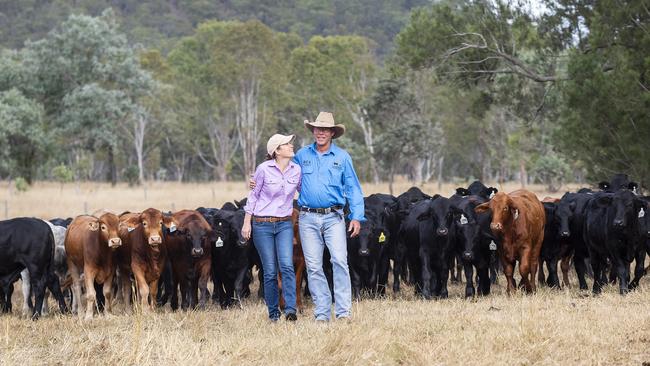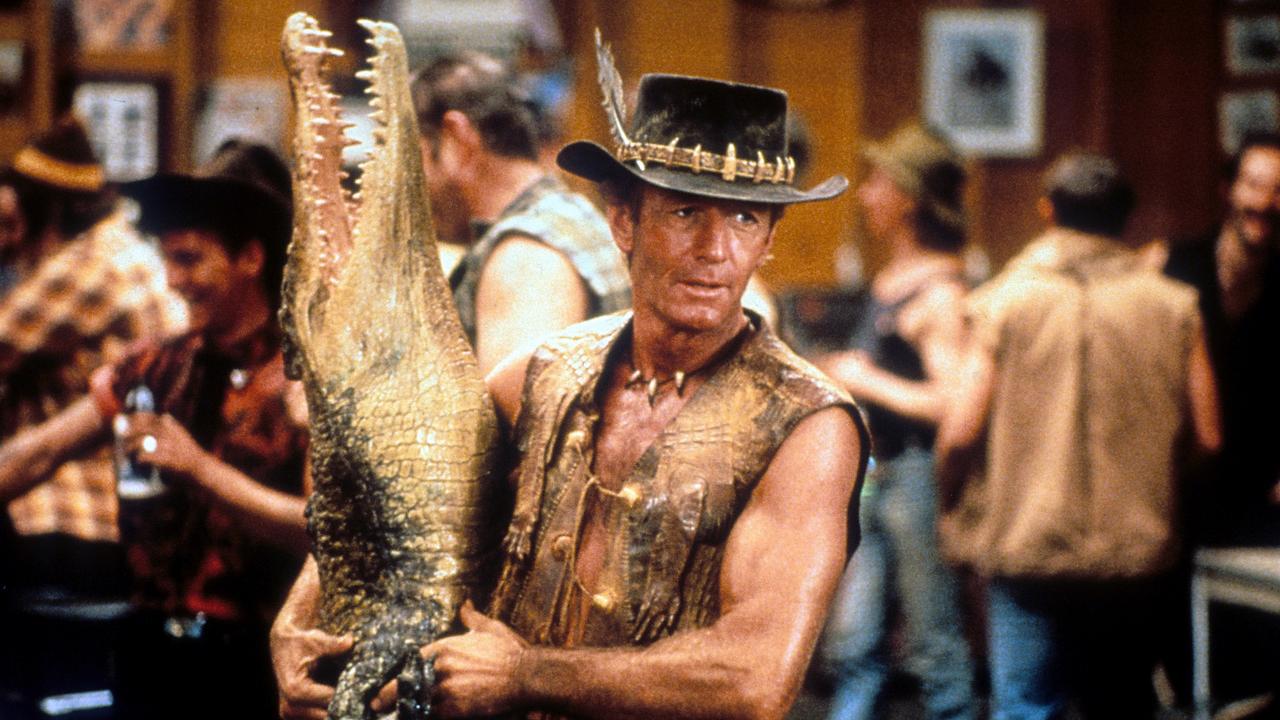Farming for the future
Landowners are seeing the benefits of returning pasture to natural vegetation.

In a eucalyptus forest east of Monto in central Queensland, fat, glossy cattle have retreated to the shade to escape the midday sun. The sun in northern Australia stings even in the cooler months. Flicking flies with their tails, the animals seem completely oblivious to the vital role they have played in the transformation of Goondicum Station. They have enabled Rob and Nadia Campbell to capitalise on the dawn of an unconventional agricultural trade — natural capital.
Not only is the private sector paying them for their bushland and the carbon it captures, but the bank manager is on board too. National Australia Bank has recognised the value of environmental improvements that began at Goondicum in the 1960s, cutting interest rates on parts of the station under conservation. The grazing systems developed by successive generations of the Campbell family have allowed large areas of native vegetation to regenerate and encouraged native wildlife populations to increase.
Goondicum is now home to one of Queensland’s largest carbon-farming projects, which will see the Campbells increase total tree coverage to 20 per cent.
“So now we’re seeing another form of diversification and a new form of income paying for improvements to the environment, while allowing us to continue sustainable and profitable cattle grazing,” Nadia Campbell says.
As the world grapples with a trajectory of alarming rises in atmospheric CO2 levels and disastrous consequences, outlined in the most recent report from the Intergovernmental Panel on Climate Change, the Campbells have been quietly working to implement their own solutions to a climate crisis. Rob Campbell’s parents began a legacy of conservation when they started returning cleared grazing land to forest. They carried out an extremely expensive application to break a long-term lease agreement with the government that required clearing for commercial timber.
“My father could see that the land was degenerating and that the natural pasture was starting to get eaten out, the land was getting compacted, and we weren’t getting the moisture and nutrients into the soil,” Rob Campbell says. The economic benefits of having more trees and lower stocking densities became clear almost immediately as the Campbells noticed dramatic improvements in pasture quality and livestock condition.
“In our particular bioregion the eucalyptus trees drop a lot of nutrients in their leaves underneath them so that makes the grass even better for the cattle. Also, when you’ve got scattered trees and open eucalyptus forests, the frost hardly gets to the ground at all and does a lot less damage. We’re actually producing more kilos of meat now than what we were 30 years ago and we have built up valuable natural capital at the same time.”
The Campbells have reduced stocking densities by 25 per cent to enable longer rest periods that encourage pasture, shrubs and trees to regenerate. They also conduct carefully timed “cool burns” to trigger the germination of native grasses, which produce new feed and promote biodiversity, but also to reduce fuel that leads to intense “hot” bushfires. To balance production with conservation, they still carry out an extremely selective thinning program within native vegetation laws. The property hosts a long list of native bird, mammal, reptilian and aquatic wildlife, including the endangered glossy black cockatoo and vulnerable brush-tailed rock wallaby.
Diverse income sources
While carbon-farming projects are enabling conservation to take place on large areas of grazing land, at about $16 a tonne the price of carbon is still too low to warrant more widespread implementation of conservation practices, particularly in cropping areas. The tools and metrics by which farmers can measure carbon sequestration and overall improvements to land condition also have been slow to develop, hindering the uptake of the carbon farming model and the ability to value natural capital.
While private firms are trialling tools and metrics to help farmers demonstrate the value of the ecological services their land can provide, the Wentworth Group of Concerned Scientists says a rise in carbon prices ultimately will drive land use changes necessary to mitigate climate change.
“If the carbon price were to double it would transform agriculture in Australia because it would enable farmers to overcome that upfront cost of restructuring their enterprise, putting their environmental monitoring systems in place, and then taking a long-term income stream off the back of that,” group member Peter Cosier says.
“Even at $16 a tonne there are now several million hectares of land in Australia in which landowners are getting paid for car-bon sequestration. So once you get the price point, it will transform agriculture. Farmers will have multiple income streams instead of just relying on commodities and the dividend includes water conservation and biodiversity conservation. Eventually when the price on carbon increases, that price is passed on and you end up with the consumer paying for those environmental services. So it’s not a government grant any more, it’s built into the market price of goods and services.”
On a basalt rock surrounded by grasslands in the heart of the southern NSW Monaro grazing district, a tiny lizard is sunning itself. This particular lizard, about the same size of a pinky finger, exists nowhere else on the planet. Its prehistoric patchwork of brown and grey, the horns and ridges of its reptilian skin, makes it almost invisible against the mottled grey rock surface. The Monaro earless dragon struck it lucky on this particular sheep and cattle farm. Severn Park belongs to grazier, conservationist and celebrated author Charlie Massy. Visiting scientists discovered a viable population of the dragon, previously thought to be extinct. It coincided with Massy’s ongoing journey of restoring the ecology of his property that began more than 40 years ago.
Wildlife corridors
While also running a profitable farming and grazing enterprise, Massy and his family have planted more than 60,000 trees and shrubs in a mosaic pattern across the property and formed wildlife corridors.
“Obviously we can’t go and replant all over the cleared country, otherwise we’d have no production base,” he says. “But what we’ve done has put birds, animals and insects back across the landscape and allowed the ecosystems to start functioning again.” The increase in vegetation drastically improved soil fertility, water infiltration and reduced soil erosion, while animals play a role in pest control and pollination.
It’s estimated that 99 per cent of the Monaro earless dragon’s grassland habitat has given way to agricultural and urban development. The remaining 1 per cent, part of which is on Severn Park, is under a conservation agreement to protect the endangered grassland ecosystem and diverse reptile, mammal and woodland bird species within it.
The conservation agreement is run by the NSW government’s Biodiversity Conservation Trust, which pays Massy to manage the land according to strict criteria.
“It’s not a subsidy — we are being paid for providing an ecosystem service that we manage and at some sacrifice,” he says. “We had to put in a tender for them to pay us to manage it under holistic and ecological principles, and over a 15-year period indexed to inflation. We’re allowed to graze it as well, but there are conditions like giving the land a minimum 90-day rest and not grazing grass down below 50 per cent. So I think it’s a really good example of being rewarded for preserving the environment and enhancing the environment for public good.”
Cosier says environmental stewardship programs will play an important transitional role in the nation’s conservation effort.
“There has been a long history of environmental degradation in Australia,” he says. “If you want it restored you can’t ask today’s farmer to pay for the mistakes of the past. If society wants it fixed then it needs to be funded by society.
“You can ask farmers not to cause further degradation; I think society has every right to ask that. And that’s what the big argument against land clearing is about — finding the right balance, stopping further damage on the one hand, but also providing the financial support for farmers to manage the environment on the other — and that’s where carbon farming can be the great breakthrough for Australia.”
Quickly developing carbon markets will be critical to retaining vegetation on a large continent with a low population density such as Australia. The Wentworth Group says the taxpayer alone will not be enough to fund the conservation effort required.
“If you compare Australia to Europe, which is about the same size but has 300 million people, the ability of taxpayers to fund environmental services is far greater in places like America and Europe,” Cosier says.
“Australia has a culture of low tax. Whereas Europe has a culture of high tax, so Europe has basically double Australia’s tax rate and 10 times Australia’s population.”
Cultural shift
Adding to the tension around competing land uses is the rise of rural property values combined with downward pressure on the price of food staples. Farmers must produce more from the same amount of land to meet interest payments and stay profitable.
Veteran rural property agent Michael Guest estimates rural land values have been rising by about 6 per cent a year across the past 25 years. He says consumer choices will be critical in driving more conservation.
“Everyone prefers to buy cheap, so global market forces do put pressure on farmers to produce more and more at a lower cost from their limited land resource,” Guest says. “At the moment there is significant market pressure for farmers to manage the land in terms of agricultural output only, with little market incentive to improve conservation as well.”
Despite the necessary legal framework implemented in the Environment Protection and Biodiversity Conservation Act almost 20 years ago, research published by the Society for Conservation Biology in September last year showed that 7.7 million hectares of threatened-species habitat had been cleared since then. Guest says the consumer will be critical to reducing the economic pressure to clear land.
“Certainly in Australia, and in other developed countries, there seems to be a cultural shift taking place, a growing social consciousness; and consumers are becoming more willing to pay a premium to source agricultural products that meet environmental and welfare objectives,” he says.
“While this change is in its infancy, it may well become a major influence on markets in years to come. And yes, this will involve being willing to pay for it in terms of higher prices for food and clothing. This cultural shift would also drive political will to support programs assisting farmers in improving conservation outcomes.”



To join the conversation, please log in. Don't have an account? Register
Join the conversation, you are commenting as Logout